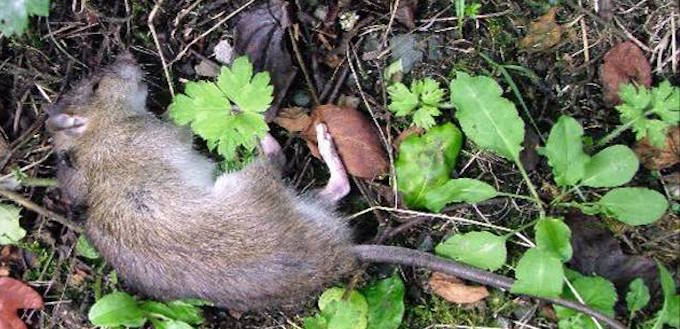A rat bait widely used by professional pest controllers is now being made available to farmers certified under the UK Rodenticide Stewardship Regime.
Romax Rat CP is one of a limited number of products authorised for use in ‘outdoors – open areas’ as defined by the stewardship regime. Where open area baiting is justified under regime guidelines, supplier Barrettine claimed its palatability, high efficacy and low risk to non-targets make it a responsible, effective option for certified farmers.
Over a five-day feeding period on a weight-consumed comparison, tests identified equal efficacy to the ultra-potent second generation anticoagulant rodenticide (SGAR) brodifacoum, according to general manager David Shelton.
“In contrast with the long persistence of SGARs, the active ingredient in Rat CP is metabolised rapidly within the rat’s digestive tract,” he explains. “So any raptor that takes a rat killed or dying from this bait is exposed to very low or negligible levels of active ingredient. In comparison to other anticoagulants, this results in the lowest toxicity to raptors on the market.”
The bait formulation is a 100g pasta-based soft block, inside a paper sachet. Mr Shelton said this combination appeals to a rat’s natural behaviour to chew, while the block can be attached or skewered to a baiting point, preventing availability to non-target species.
Under compulsory application of the stewardship regime’s risk hierarchy, defined by the stewardship regime’s Code of Best Practice, the product group that includes Romax Rat CP is recommended ahead of SGARs, unless defined exceptional circumstances apply.
The first formal assessment of the stewardship regime from the HSE-led Government Oversight Group (GOG) has confirmed that the regime is fit for purpose. However, it states an expectation of reducing second generation anticoagulant residues in Barn Owls as a sentinel species, warning that failure to meet this may result in changes to the regime.
Recognising practical reality in its report, GOG ‘does not under-estimate the significance of this challenge and recognises the significant efforts and achievements of CRRU and all involved’. In particular, the report notes the challenge of getting stewardship standards in place on 100,000 farms.
For the farming sector, stewardship-approved assurance schemes are an alternative to training-based proof of competence in the use of rodenticides. In the report, GOG states the expectation that farmers will not wait for an assurance scheme audit before adopting stewardship standards. It also promises ‘further work to consider how to validate stewardship compliance on the ground’.
Dr Alan Buckle, chairman of the Campaign for Responsible Rodenticide Use (CRRU), the body responsible for the regime’s implementation, said a key priority under the regime is the need for verification audits at point of sale.
“Ensuring that professional rodenticides are only available to responsible certified users is a critical priority,” he said. “With rodenticides in competent hands, the goal is meaningful behavioural change leading to measurable effects in non-target species.”




